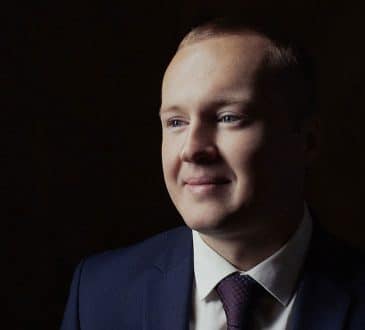3 Power Strategies For Building Unique Business Relationships

A Unique Business Relationship (UBR) is a relationship that is difficult, if not impossible, to replace. It is the gold standard in business development—the ultimate goal of rainmakers. In my experience, good relationships aren’t good enough anymore and great relationships are not as reliable as they used to be. We need something more. We need the type of relationship with our clients, customers and referral sources that will maximize the potential of getting and keeping the business. There are three power strategies at the heart of building UBRs.
Familiarity
In business development, we must recognize the importance of truly getting to know our prospects, existing clients and other important people within our network. How much do we really know the people we are pursuing for business? What information have we learned about their families, backgrounds, hobbies, interests, dreams for the future and business vision? These are the sorts of things that, if learned, can create the level of familiarity that is critical to start building a UBR.
For example, recently I was invited to a Notre Dame football game by a proud alumnus, who is an important referral source of mine. Throughout the game they played the opening riff of “Crazy Train” by Ozzy Osbourne over and over. Can you hear it? Before the end of the first quarter, I asked my friend if he liked Ozzy. Turns out, he’s as much of a superfan as I am. We uncovered a shared interest in rock music, which, had I not talked about the song, I may not have ever discovered. Now this referral source and I share a common interest in Ozzy and rock music, which has opened up a unique bridge between us to further enjoy, one which will continue to nurture our business relationship.
You never know what someone’s interests might be. You may discover upon respectful inquiry that you share an area of interest that can be used as a means to foster the relationship. Always be cognizant of the fact that there are many opportunities to become more familiar with people and to uncover common interests. Use those areas of common interest to build UBRs, and watch your relationships mature into real business.
Fluidity
In order to maximize our potential to build UBRs, we must possess the social skill of fluidity—the ability to move seamlessly between three distinct personas during interactions with people within our network: serious professional, friend and leader.
Most professionals nail the persona of serious professional because they are, in fact, serious professionals. But the major problem for many professionals is moving out of that comfort zone and into the personas of friend and leader.
UBRs are based on the concept of truly getting to know what makes a person tick and what moves that individual, a revelation most efficiently made in the context of friendship. It is quite difficult to elicit more personal information about a person without befriending that individual. We need people to open up to us and share information that can then be a sincere basis for building a UBR.
We must also remember that nothing happens in a relationship without leadership. Words are cheap, and promises are merely words until someone acts and follows through. We must be prepared to lead the conversation with others and direct future action in a mutually-beneficial way. This could be as simple as recommending a follow-up meeting, scheduling a dinner or making a valuable introduction.
We need to first recognize these three distinct personas and then practice weaving them into our interactions with others.
Sharing
Sharing opportunities involving UBRs with other strategic people in our network can exponentially fuel our efforts to build UBRs. By doing so, we continue to foster a UBR with one individual but also provide a critical benefit to yet another person in our network that will be memorable.
When we are building a UBR with a prospect, we need to look for ways to introduce another person we care about into that UBR-building process. This exposes the second person to our prospect and the uniqueness of our relationship with that individual and, at the same time, we allow our other contact to also start to build a UBR with the original prospect.
For example, awhile back a referral source of mine was invited by one of his prospects to race cars at the Autobahn Country Club in Joliet, Illinois. My referral source invited me to attend with his prospect’s permission. The prospect was more than happy to meet me as we are in the same industry. We all love driving and fast cars, cementing a bond over the prospect’s hobby. As both my referral source and I continued to race cars, we both were able to continue to build a UBR with the prospect—who is now also a prospect of mine.
Inviting a business contact into a UBR is easy and fun to do. My experience has proven that the more unique the activity, hobby or interest, the better. We need to take advantage of opportunities to get our important contacts involved with some of our UBR activity and they will, in turn, do the same for us. Everyone benefits by having more UBRs to help them grow their respective businesses.
Leverage the 3 Power Strategies
Aspire to achieve the most powerful of business relationships—the UBR. Dedicate your efforts to achieving a close familiarity with those key people in your network. Practice your fluidity by navigating your role as serious professional, friend and leader. Invite others into your UBRs with people who are important to you. Leverage these three power strategies to build relationships that are difficult, if not impossible, to replace and watch your business development efforts take off!
Writen by Joe Brocato.
Have you read?
# Best Music Schools In The World For 2019.
# Best Fashion Schools In The World For 2019.
# Best Business Schools In The World For 2019.
# World’s Best Hospitality And Hotel Management Schools, 2019.
# Best Law Schools In The World, 2019.
Bring the best of the CEOWORLD magazine's global journalism to audiences in the United States and around the world. - Add CEOWORLD magazine to your Google News feed.
Follow CEOWORLD magazine headlines on: Google News, LinkedIn, Twitter, and Facebook.
Copyright 2025 The CEOWORLD magazine. All rights reserved. This material (and any extract from it) must not be copied, redistributed or placed on any website, without CEOWORLD magazine' prior written consent. For media queries, please contact: info@ceoworld.biz








